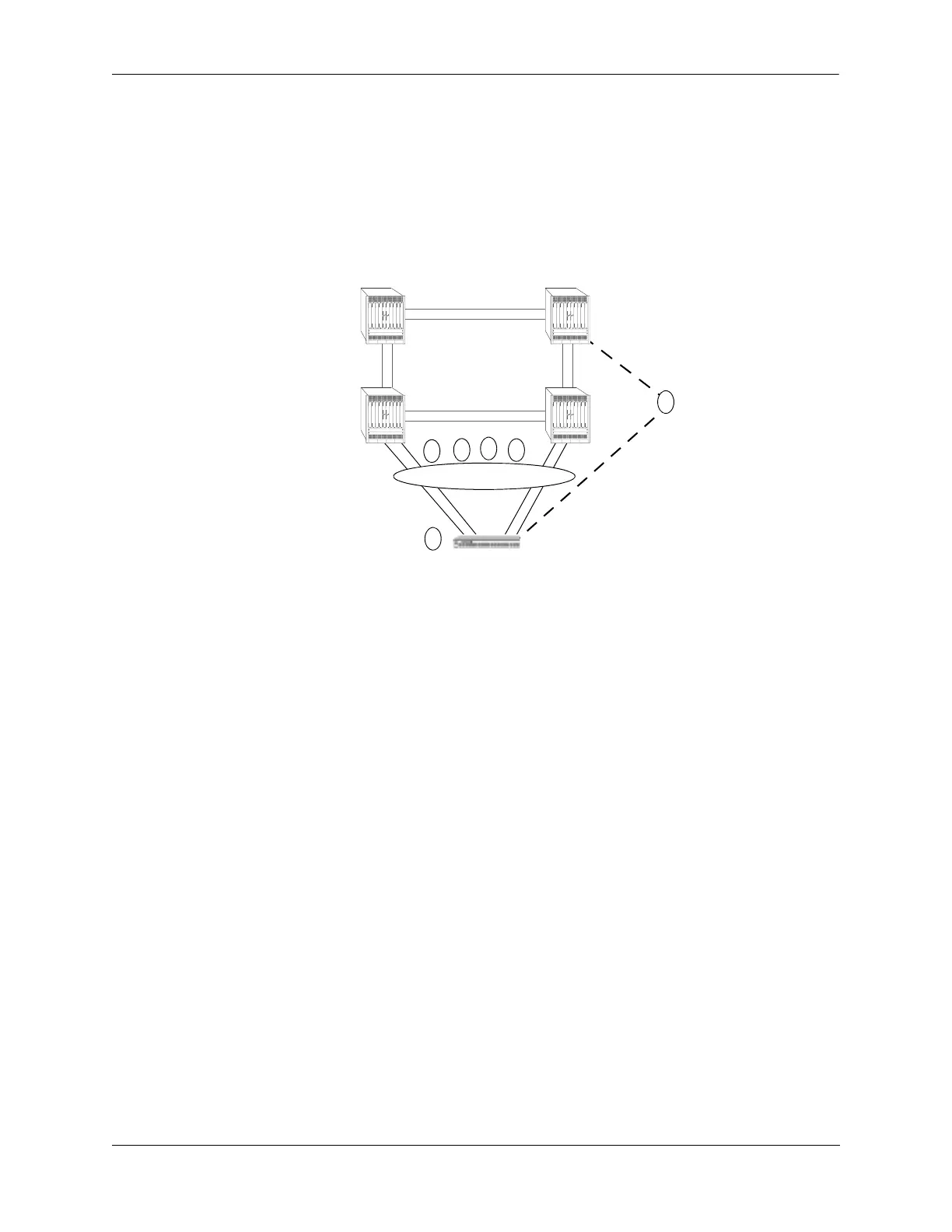Configuring Dynamic Automatic Fabric Auto-Fabric Discovery Examples
OmniSwitch AOS Release 7 Network Configuration Guide June 2013 page 14-9
Auto-Fabric Discovery Examples
Auto-Fabric Configured in the Core
The core is manually configured to be in auto-fabric mode on a subset of ports. When user enables auto
discovery window, auto discovery is triggered for discovery time window.
Auto-fabric in the Core
1 OS6900 with no boot.cfg configuration file, auto-fabric enabled by default. The switch has multiple
connections to the core (which has auto-fabric enabled on the connected ports).
2 LLDP exchanges port properties and auto discovers LACP ports.
3 LACP with same admin key is exchanged. Multiple ports with same admin key are detected and LAG
is formed and configured on both core and edge switches.
4 After LACP discovery window expires, SPB discovery starts. SPB BVLANs and control BVLANs are
exchanged and adjacencies are saved.
5 MVRP control frames are exchanged for all non-BVLANs. VLANs received through MVRP frames
are associated with the ports on which MVRP frames are received.
6 Auto-discovered configuration is periodically saved in runtime configuration on the OS6900 as well as
the core switches, but a manual ‘write memory’ must be entered to make it permanent in the boot.cfg and
saved across switch reboots if the auto-fabric config-save admin-state is not enabled. Ports which
already have a configuration are not eligible for auto-discovery on the next reboot.
Virtual Chassis in core with
auto fabric enabled on a
subset of ports.
OS6900
LAG
1
2
3
6
4
5
VC - VFL
